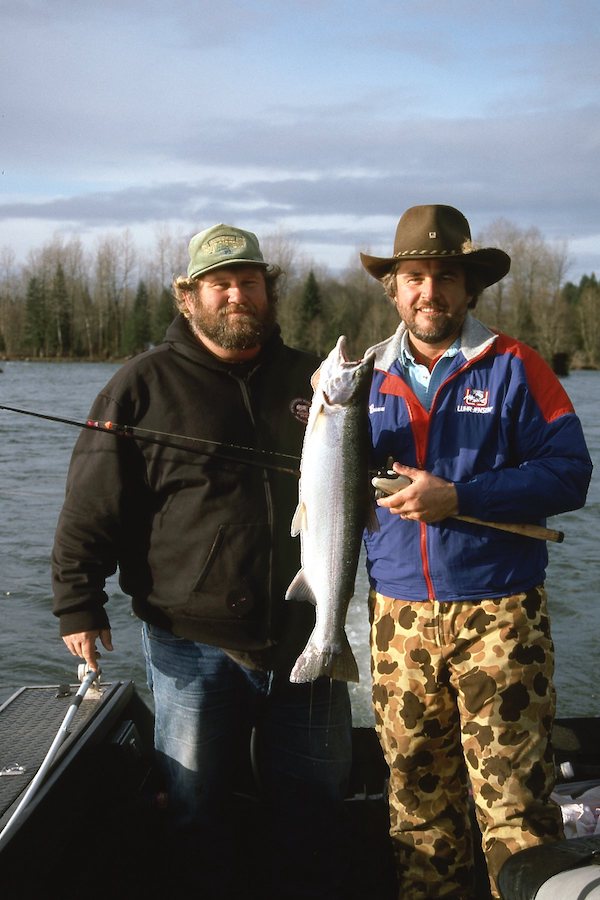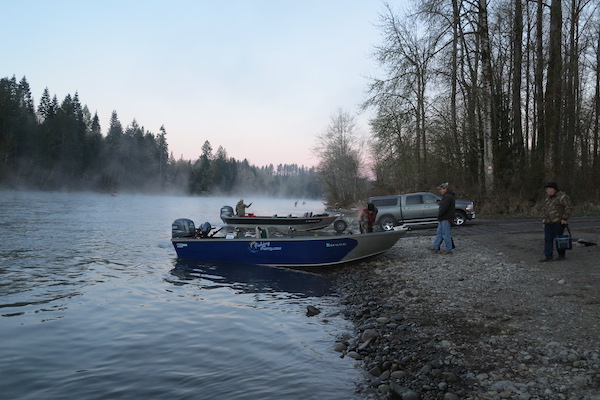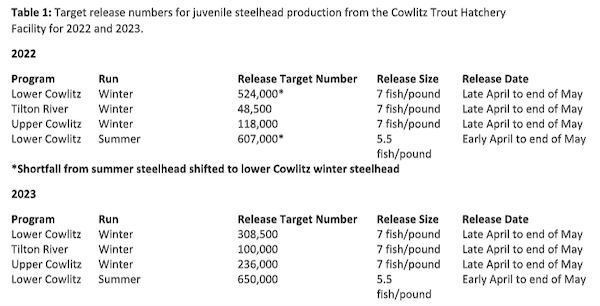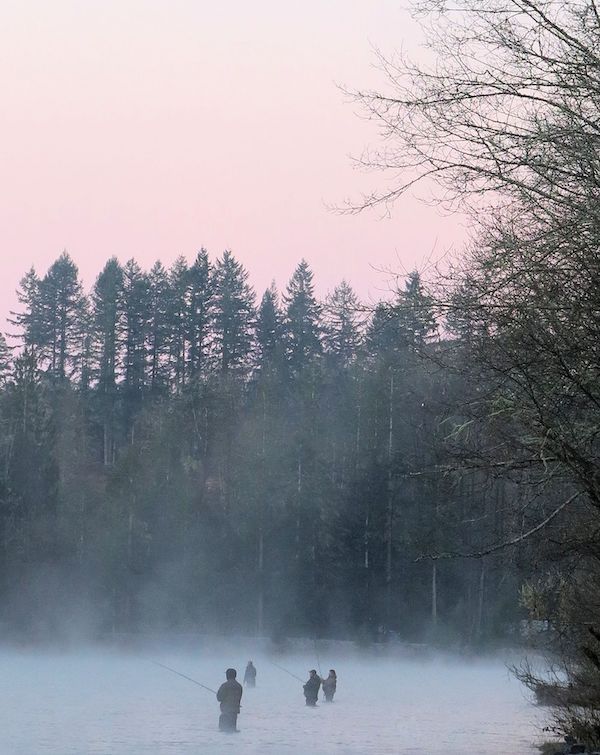
Revenant Steelhead: Resurrecting The Cowlitz Early Winter Fishery
Remember the good ol’ days of late fall and early winter steelheading on Southwest Washington’s Cowlitz? They’re a lot closer to coming back than you may realize.
State and utility managers are “working to shift” the lower river’s stock “to produce earlier-returning fish,” a resurrection and reformation of a fabled fishery.

That niche was once held by out-of-basin Chambers Creek-stock steelhead, which lit up the waters off Blue Creek as early as November before peaking in December and January. But the hatchery program ended in the early 2010s over “potential genetic and ecological impacts” on the Cowlitz’s natural-origin steelhead. In the years since, most winters-runs have come back in March and April.
It’s made for bleak holiday fishing reports.
However, the possibility of recreating an earlier-timed return with an in-basin strain of steelhead has always been there in Tacoma Public Utilities’ 2011 Fisheries and Hatchery Management Plan for the watershed it operates two dams on.
I won’t bore you with all the “transition plan” and “dam relicensing” and “fisheries technical committee” and “hatchery genetic management plan” talk, but suffice it to say that that the goal now appears in reach.
“Creating an earlier-returning winter steelhead program has been a multi-year process, beginning with feedback from the public asking for the return of an early-timed fish,” TPU and Washington Department of Fish and Wildlife officials told me in a joint statement released in mid-December. “We have prioritized this program change and have now shifted to a front-loaded broodstock collection approach by collecting the first returning fish for broodstock in order to move up adult return timing.”

The initial phase saw hatchery fish collection moved from April 1 to February 1. Testing was done to weed out any early-returning fish with leftover Chambers Creek genes; of 65 sampled for broodstock, only two showed signs of the Puget Sound stock once widely used in Western Washington programs, and no eggs or milt were taken from the duo, TPU and WDFW say.
“We will continue to advance the run timing by collecting the earliest returning winter steelhead for the segregated program broodstock with no time limit,” the agencies say. “We believe this management strategy will shift the peak arrival time of winter steelhead returns up to two months earlier over the same period. It is expected that these results will become more and more apparent over the next three [fish] generations – over the course of the next 10 years.”

IN TERMS OF smolt production, TPU and WDFW are married to an overall annual release of 1.2-plus million steelhead spread across the Cowlitz’s four hatchery stocks – Tilton integrated winters, Cispus and upper Cowlitz integrated winters, lower Cowlitz segregated winters, and lower Cowlitz segregated summers.
But managers can shift how big the four slices of pie are from year to year.
“So, if a population is having a poor year, we still can meet our release target of 1.2-plus million fish … Allowing production to shift between steelhead programs as necessary should increase the number of years we reach our release number targets. Since all our hatchery steelhead are adipose clipped, all the returning adults from the four steelhead programs will be available for recreational harvest,” the agencies say.
Last year’s release goal for just the new early winter segregated stock was 524,000 smolts, which will begin to return next season after 18 months at sea, while this year’s is 308,500. The difference is due to covering a summer-run production shortfall.
“Beginning in 2022, we began even more aggressively pushing the lower Cowlitz winter steelhead program earlier,” the utility and state say. “All the earliest returning fish were kept for broodstock to help move the next generation’s return timing earlier.”
The good news is that they believe they can do all of this without requiring late fall and early winter fishing to be shut down or restricted so as to reach their broodstock goals, like we’ve seen with North Sound hatchery programs during past years of weak returns.

IT’S ALL POSITIVE but also way too soon to expect an immediate return to the good ol’ days on the “mother Cow,” like, say, the 2001-02 season, when anglers bonked 1,488 hatchery fish in November, 8,656 in December and 3,143 more in January.
But in a state where steelhead stocks and fisheries are in such a different place than they were even just a decade ago when the Cowlitz’s Chambers program was ended, it’s a glimmer of hope, and not just for the Blue Creek bunch, but those who want to explore well upstream of that combat fishery. TPU and WDFW figures show an average of a quarter million Tilton and upper Cowlitz/Cispus smolts released the past two years.
It could all combine to make for a consumptive-oriented playground between the Northwest’s two major metro areas.
“The lower Cowlitz segregated program is focused on harvest opportunity for anglers, while also allowing us to meet our conservation goals in the upper basin. The shift of the lower Cowlitz program from integrated to segregated means that natural-origin fish do not need to be collected at weirs for broodstock needs, equating to more natural fish on the spawning grounds in the lower Cowlitz and its tributaries,” TPU and WDFW say. “The upper Cowlitz and Tilton integrated programs are meant to support recovery and build adult abundances, while also providing angler opportunity.”
While it literally took biologists from the two agencies six and a half long months to answer my questions about their plans to build the early run back up, in the end they do appear to have been responsive to anglers who want to harvest steelhead earlier in winter, and they say they’re “doing our best to create that outcome,” while also protecting natural-origin stocks throughout the system.
“We believe the changes … will lead to angling opportunity for steelhead over a longer time period and increase the number of adult fish in the upper watersheds. This should eventually lead to increased natural juvenile production and greater numbers of natural adults in the Tilton, upper Cowlitz, and Cispus Rivers for years to come,” TPU and WDFW say.

